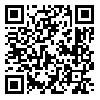Volume 29, Issue 3 (2022)
AIJH 2022, 29(3): 93-113 |
Back to browse issues page
Download citation:
BibTeX | RIS | EndNote | Medlars | ProCite | Reference Manager | RefWorks
Send citation to:



BibTeX | RIS | EndNote | Medlars | ProCite | Reference Manager | RefWorks
Send citation to:
naemi Z. Karbala and Ashura their Effect in the Strengthening the Shia identity (Case Study: Old Arabic Poetry from Islamic era to the Buyid State). AIJH 2022; 29 (3) :93-113
URL: http://aijh.modares.ac.ir/article-31-52847-en.html
URL: http://aijh.modares.ac.ir/article-31-52847-en.html
Assistant Professor, Department of Arabic Language & Literature, Kharazmi University , naemi.zohreh@khu.ac.ir
Abstract: (2624 Views)
Identity means the reality of a person, thing, group and nation. There is no being without identity in the world of existence. It has different in types like historical, linguistic, religious, social and cultural identifies. This paper aims to study the effect of Karbala and the Ashura events on the historical and socio-cultural identity of Shia in old poetry, from the first to the fifth century AH, based on the qualitative content analytical method. This research is based on the poetry of ten old Shia poets. This article draws conclusions such as: Karbala is part of the history of Shias, their historical and political identities, which cannot be deciphered. The poets have preserved it in their collections, as it is a factor for the unity of the Shiites. The social and cultural morale of the Shiites on the day of Ashura, not only has an emotional dimension, but political and spiritual as well. The poet adheres to it in order to establish unity among the people, and to minimize their pain. We see old Shia poets not very inclined to explain the details of Ashura, but rather talk about the faculties that constitute the foundations of their beliefs.
Keywords: Karbala, Old Arabic Poetry, Shiite Identity, Historical Identity, Social and Cultural Identities.
Article Type: Original Research |
Subject:
Arts and Humanities (General)
Received: 2021/05/26 | Accepted: 2021/08/26 | Published: 2022/09/27
Received: 2021/05/26 | Accepted: 2021/08/26 | Published: 2022/09/27
Send email to the article author
| Rights and permissions | |
 |
This work is licensed under a Creative Commons Attribution-NonCommercial 4.0 International License. |







